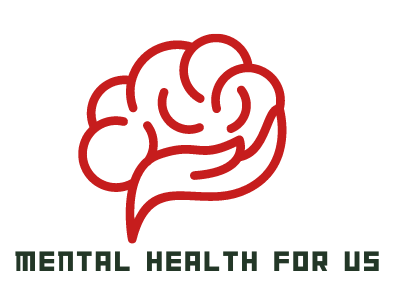Introduction
Post-Traumatic Stress Disorder (PTSD) Get Worse with Age is a mental illness that can develop after traumatic experiences. Flashbacks, nightmares, and severe anxiety are core symptoms of PTSD. Elderly people are growing as the global population ages. This demographic shift raises awareness of older adults’ mental health needs. Mental disabilities, including PTSD, are more common in this age group, according to research and clinical experience. Recent studies have illuminated late-life-onset PTSD, which was previously thought to occur after a traumatic event.
Does PTSD Get Worse With Age?
Traumatized people can develop PTSD. PTSD can develop after a traumatic event, but late-life-onset PTSD in people over 60 is becoming more common. PTSD symptoms often appear later in life due to resurfacing traumatic memories. After years of suppression, these memories can resurface and affect aging adults’ mental health and quality of life.
However, PTSD does not necessarily get worse with age for everyone, but its impact can vary depending on various factors. Some people’s symptoms improve with treatment and coping strategies, while others’ worsen, especially if they don’t seek help or are exposed to more traumas. PTSD can affect an individual depending on their health, support system, and life circumstances as they age. It is necessary to discuss PTSD in older adults to study PTSD consequences in older age.
Prevalence of PTSD in Older Adults
The prevalence of PTSD in older adults is of growing interest. Numerous community studies have examined current and lifetime PTSD rates in this population. The percentages vary due to the limited number of studies on older adults.
Some community studies estimate that 2% to 8% of older adults have current PTSD, while 5% to 20% have lifetime PTSD. Since older adults are underrepresented in research studies, these percentages may not accurately reflect their PTSD prevalence.
PTSD symptoms in many older adults are subclinical, making it difficult to estimate the prevalence of this disorder in this population. The high prevalence of trauma exposure in older adults highlights the importance of studying how trauma affects mental health in late life.
More research is needed to understand PTSD in older adults. This will reveal prevalence rates and inform mental health strategies and interventions for this population.
Physical Health Consequences of Aging with PTSD
Older adults with PTSD may suffer physical health issues. PTSD symptoms like intrusive memories, nightmares, and hyperarousal can harm this population’s health.
Aging with PTSD worsens physical health due to natural decline in physical ability. PTSD can cause muscle tension, pain, and fatigue in older adults, limiting their mobility and physical function. This can increase sedentary lifestyle and health problems.
PTSD can worsen physical health when combined with aging-related medical issues. Cardiovascular disease, diabetes, and chronic pain are common in older adults and linked to PTSD. These medical issues and PTSD symptoms can worsen physical health and increase the risk of other health issues.
Another aging-related factor that can worsen PTSD and physical health is loss. PTSD symptoms can worsen in older adults after losing loved ones, independence, or other life changes. These losses can cause emotional distress, sleep disturbances, appetite changes, and immune system weakness.
In summary, aging with PTSD has serious physical health consequences for older adults. This population’s PTSD symptoms and physical well-being worsen due to medical issues, physical decline, and loss. Comprehensive PTSD care for older adults requires recognizing and addressing these physical health effects.
Mental Health Consequences of Aging with PTSD
PTSD can worsen in older adults due to unique challenges. Major factors include role changes and functional losses. Retirement, loss of independence, or living arrangements may occur as people age. These changes can exacerbate PTSD symptoms, causing distress and mental illness.
Older adults may also notice PTSD symptoms more. They may struggle to control their emotional responses to traumatic memories due to cognitive decline and coping strategies. This can worsen intrusive memories, trigger avoidance, and hyperarousal. These symptoms may worsen mental health and quality of life.
Many stressors can worsen PTSD in older adults. Chronic pain or cognitive impairment can increase vulnerability and make PTSD management harder. Losing friends or family can also lead to isolation, making PTSD harder to manage. Retirement can worsen PTSD symptoms by causing a loss of identity and purpose.
In summary, PTSD can affect mental health as you age. Role changes, functional losses, decreased coping strategies, and stressors can worsen symptoms and well-being. Older adults with PTSD need mental health support and interventions to manage their symptoms.
Impact on Quality of Life for Older Adults with PTSD
PTSD can severely impact older adults’ daily lives, relationships, and well-being. Flashbacks, nightmares, and hypervigilance can make daily tasks difficult for PTSD sufferers. This can reduce their independence and control.
Additionally, PTSD can strain family relationships. PTSD can make older adults emotionally withdrawn or irritable, causing family and social conflict. Their symptoms may prevent them from socializing, causing loneliness and isolation.
Older adults with PTSD have trouble getting mental health care. They may be hesitant to seek mental health treatment due to stigma. Some mental health professionals may not have geriatric mental health training or understand the needs of older adults with PTSD.
Older adults with untreated or poorly managed PTSD can suffer serious consequences. Chronic stress from untreated PTSD can cause or worsen cardiovascular and autoimmune diseases. Social isolation and decreased life satisfaction are common in older adults who struggle to maintain friendships or enjoy activities.
Finally, PTSD can significantly impact older adults’ quality of life. Improving their well-being requires addressing mental health care access issues and reducing stigma.
Treatment Options for PTSD
PTSD treatments include psychotherapy, medication, and complementary therapies. Psychotherapy, especially trauma-focused cognitive behavior therapy (CBT), cognitive processing therapy and exposure therapy, is often used. CBT helps trauma survivors identify and change negative thought patterns and behaviors, while exposure therapy gradually exposes them to their traumatic memories to reduce their emotional impact.
Depression and anxiety can be treated with selective serotonin reuptake inhibitors (SSRIs) or other antidepressants. These drugs can calm mood and reduce flashbacks and nightmares. Eye movement desensitization and reprocessing (EMDR), mindfulness, and yoga may also help PTSD symptoms.
Peer and supportive networks can help people recover by providing a sense of belonging and understanding. The best PTSD treatment plan is usually customized and may combine these methods to promote healing and quality of life. PTSD sufferers must seek professional help to determine the best treatment plan.
Conclusion
This article intended to discuss does PTSD get worse with age. It is concluded that PTSD does not necessarily get worse with age for everyone, but its impact can vary depending on various factors. Some people’s symptoms improve with treatment and coping strategies, while others’ worsen, especially if they don’t seek help or are exposed to more traumas. PTSD can affect an individual depending on their health, support system, and life circumstances as they age. PTSD sufferers need professional help to manage their condition and improve their quality of life.
FAQs
What makes PTSD difficult to treat?
The complexity of trauma, individual responses, mental health stigma, and the possibility of comorbid conditions make PTSD difficult to treat.
Can I live normally with PTSD?
Yes, many PTSD sufferers can live normal lives with treatment and support.
What age suffers from PTSD the most?
PTSD is most common in adults, especially those who have experienced significant trauma or combat.







